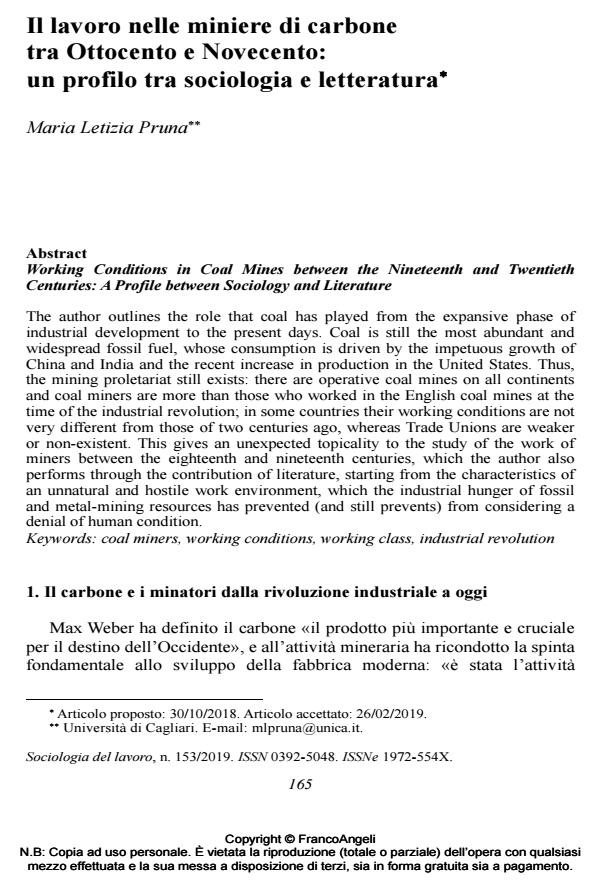Working Conditions in Coal Mines between the Nineteenth and Twentieth Centuries: A Profile between Sociology and Literature
Journal title SOCIOLOGIA DEL LAVORO
Author/s Maria Letizia Pruna
Publishing Year 2019 Issue 2019/153
Language Italian Pages 17 P. 165-181 File size 295 KB
DOI 10.3280/SL2019-153010
DOI is like a bar code for intellectual property: to have more infomation
click here
Below, you can see the article first page
If you want to buy this article in PDF format, you can do it, following the instructions to buy download credits

FrancoAngeli is member of Publishers International Linking Association, Inc (PILA), a not-for-profit association which run the CrossRef service enabling links to and from online scholarly content.
The author outlines the role that coal has played from the expansive phase of industrial development to the present days. Coal is still the most abundant and widespread fossil fuel, whose consumption is driven by the impetuous growth of China and India and the recent increase in production in the United States. Thus, the mining proletariat still exists: there are operative coal mines on all continents and coal miners are more than those who worked in the English coal mines at the time of the industrial revolution; in some countries their working conditions are not very different from those of two centuries ago, whereas Trade Unions are weaker or non-existent. This gives an unexpected topicality to the study of the work of miners between the eighteenth and nineteenth centuries, which the author also performs through the contribution of literature, starting from the characteristics of an unnatural and hostile work environment, which the industrial hunger of fossil and metal-mining resources has prevented (and still prevents) from considering a denial of human condition.
Keywords: Coal miners, working conditions, working class, industrial revolution
Maria Letizia Pruna, Il lavoro nelle miniere di carbone tra Ottocento e Novecento: un profilo tra sociologia e letteratura in "SOCIOLOGIA DEL LAVORO " 153/2019, pp 165-181, DOI: 10.3280/SL2019-153010